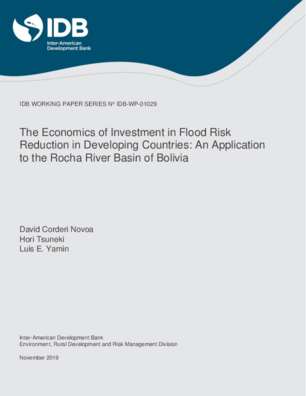The Economics of Investment in Flood Risk Reduction in Developing Countries: An Application to the Rocha River Basin of Bolivia
Date
Nov 2019
Existing and projected economic losses caused by floods all over the world have generated a growing consensus about the need for investment in flood risk mitigation. Most of the evidence on the returns to risk reduction in developing countries is based on cost-benefit analysis performed for specific measures, lacking a comprehensive appraisal of alternatives. This paper presents an integrated approach to consistently prioritize potential flood mitigation measures in a river basin and determine the economically desirable investment level in flood risk reduction. An optimization model is developed to select the type, size and schedule of flood risk mitigation measures over a planning horizon. The model is formulated as a dynamic mixed integer linear program and applied to a river basin where severe floods have occurred historically. A variety of individual and combinations of risk reduction measures are used as inputs for the model. Initial analysis is conducted for different scenarios of flood damage growth, investment financing constraints, and decision-makers’ preferences towards extreme and future losses. Results show that the optimal investment plans vary according to different assumptions and scenarios. The proposed integrated approach can inform the design of investment plans for flood risk reduction based on sound economic principles, providing valuable support to decision-makers.




